
How to Collect & Manage Feedback from Beta Testers
Beta testers are valuable in the product development process and beyond. They can give you valuable feedback to enhance your product and validate your product ideas before launch. They might leave reviews on public sites, influencing future customers. Some of them may even be your first paid users.
You need to properly manage the beta testers' feedback to make the most out of this. In this blog, you’ll learn nine ways to collect and manage beta user feedback.
What is beta testing, and why is it important?
As a part of user acceptance testing, software companies frequently conduct beta testing other than alpha testing to gather feedback from a subset of their target customer and real users to improve their products.
This entails recruiting beta testers tasked with using the product for a specific period of time and providing detailed feedback on aspects such as user experience, product functionality, user interface, user acquisition, and bug testing.
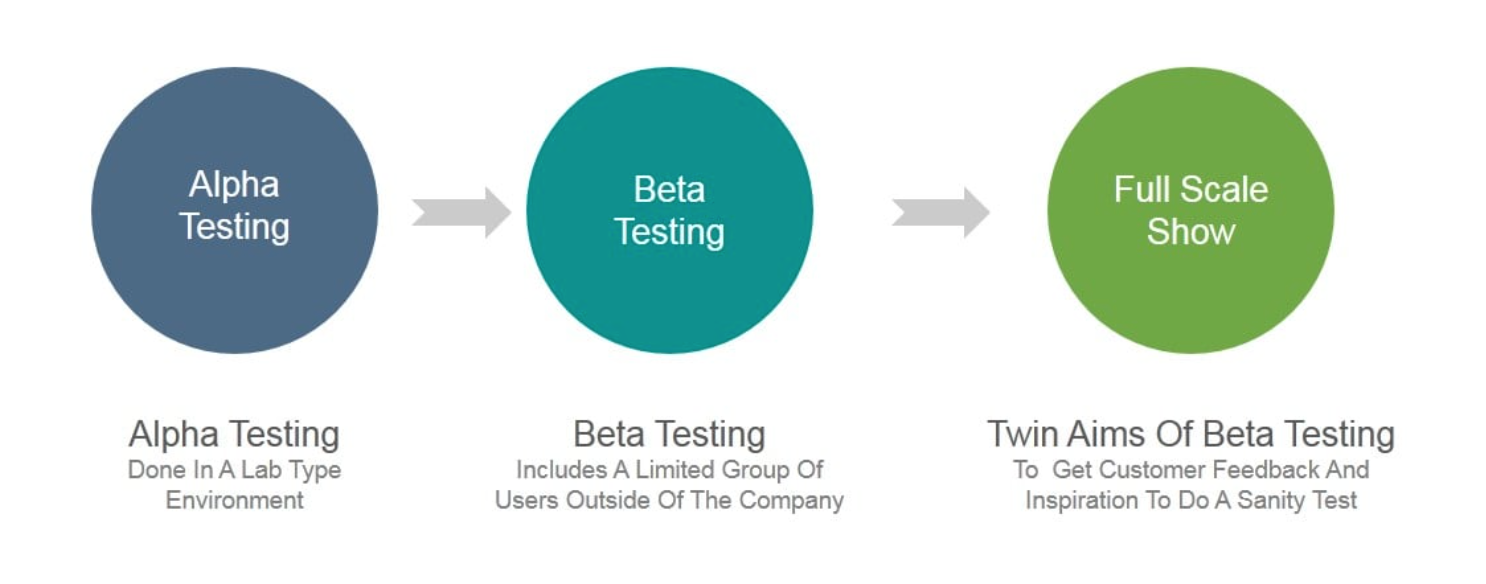
There are many reasons why product managers and developers rely on beta testing feedback:
- Understanding the needs of the target audience and market demand for the product will be successful.
- Detect bugs before launching the product publicly.
- Save time and money by prioritizing features and making tweaks to the product strategy if necessary.
- Generate buzz and word-of-mouth around the new product with an open beta or public beta testing.
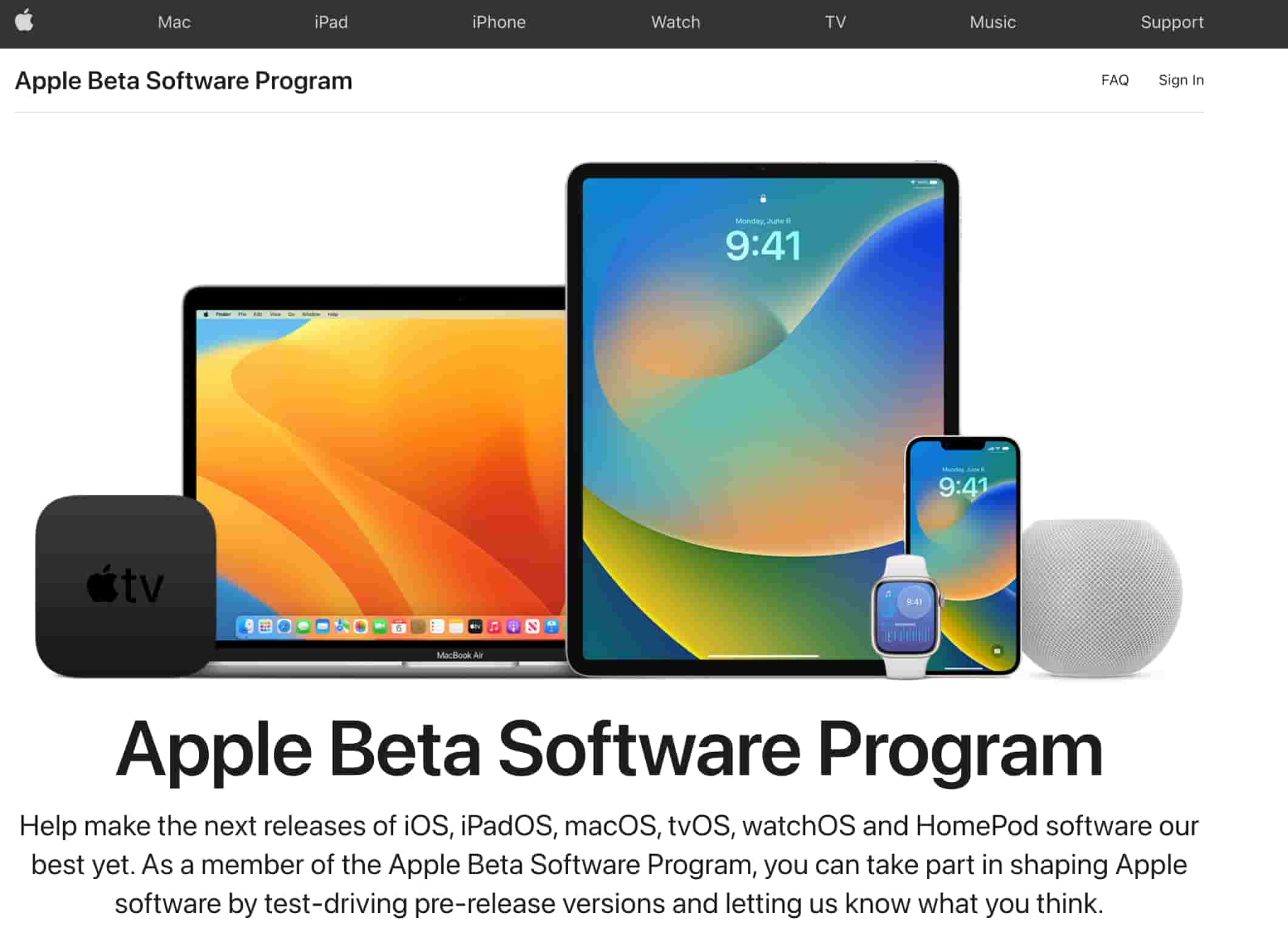
Where to find beta testers for your product?
Finding the right beta testers for your product is a crucial step in the development process. Beta testers are essential for any product development process. They provide valuable feedback on features, usability, and performance, which helps to ensure that the final product is of high quality.
Where can you find beta testers?
Your customer base
If you already have customers and want to run beta tests for a new feature or product, reaching out to your customers should be your first choice. With the help of beta feedback management tools, you can easily reach out to target customers and ask them to join the beta with the help of private beta feedback boards.
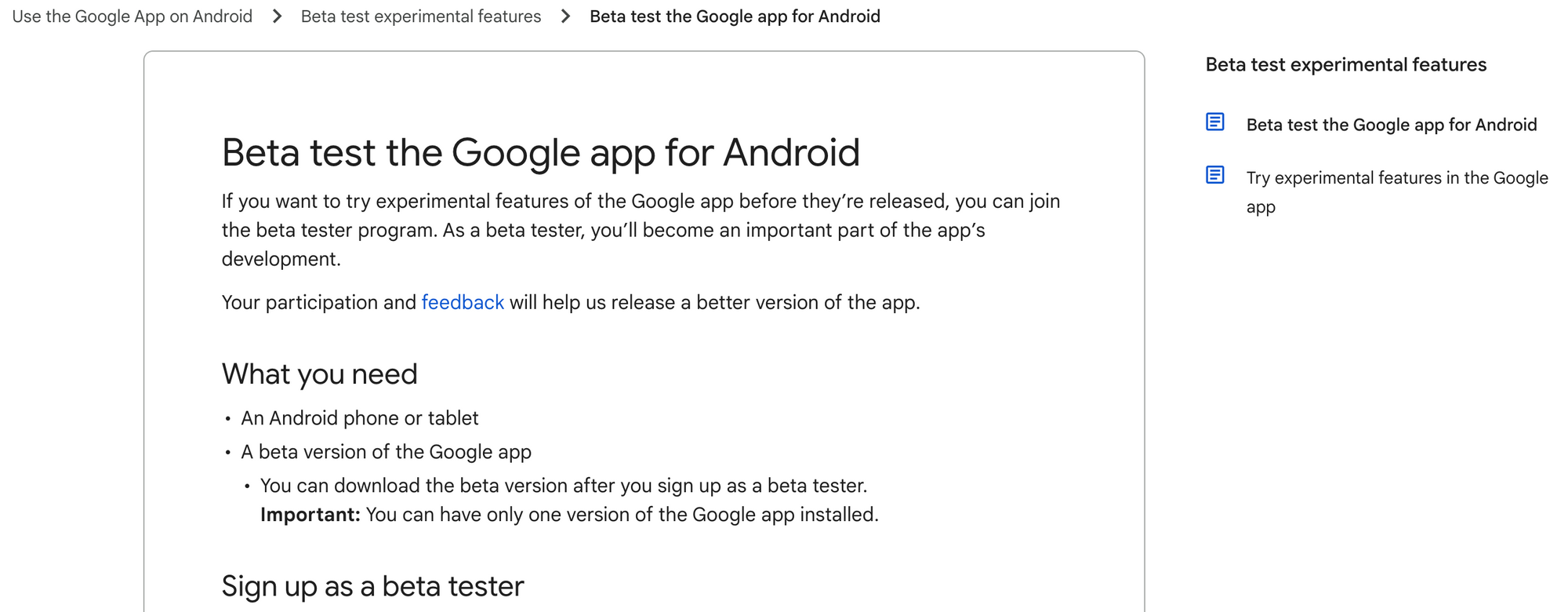
Social media
Social media platforms like Twitter, Facebook, and LinkedIn are also used to find potential beta testers. Post details about your beta testing program and ask your followers and audience to participate.
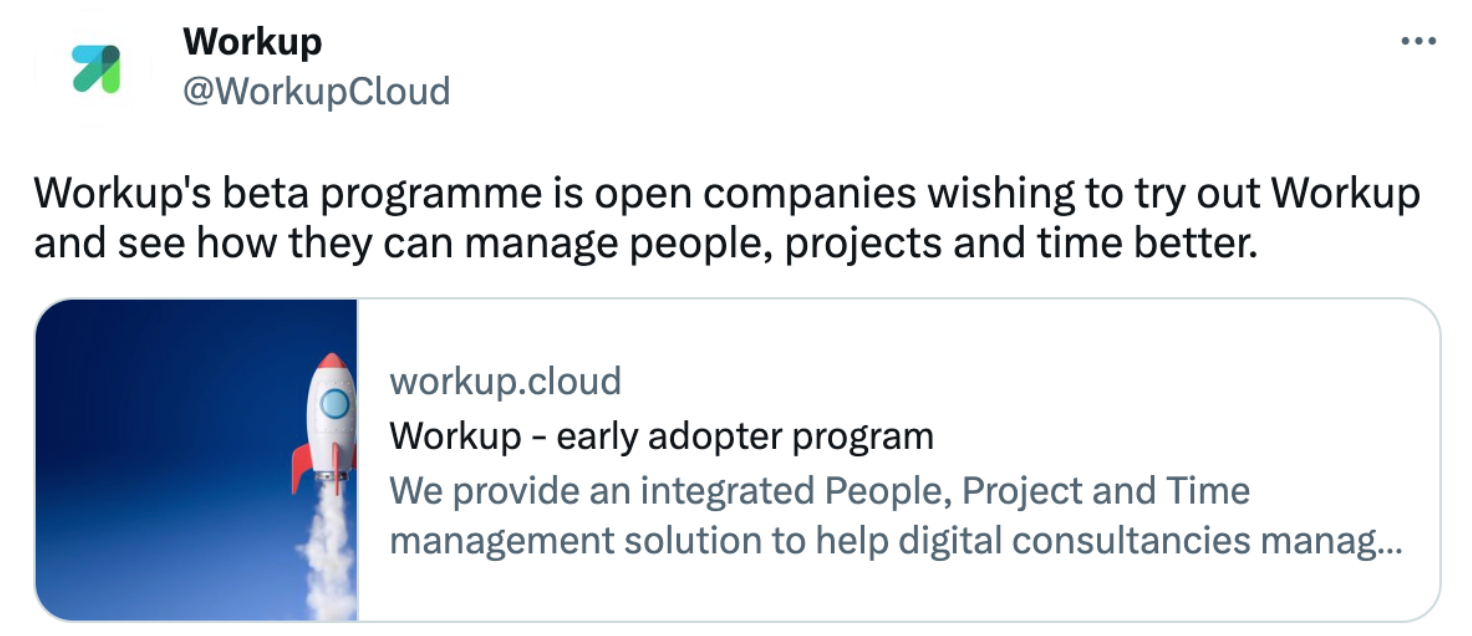
Online communities
Online communities, forums, and groups like Reddit and Quora are great places to find beta testers. This is also a great way to network and build relationships with future customers in your niche.

Beta testing platforms
Several beta testing platforms are available, such as BetaTesting, BetaList, and Betabound. These platforms often have a pool of pre-screened testers that you can choose from. Ensure you are specific about what you need and how detailed their feedback should be.
How to Manage Feedback from Beta Testers
If you’re building a new product, beta tester feedback is valuable in many ways. So, you need to make sure it is collected and managed well. Let’s look at how you can manage beta user feedback:
Identify key feedback areas
Identify key areas and the right times to ask for feedback to set goals before rolling out a feedback system for your beta testers. The goals will vary based on what stage of product development you’re in, open or close beta, and the type of beta testing — marketing or product or technical and when you are asking for feedback for the beta version.
Do foundational research — who is your target audience, what are your customer problems, and how do you intend to solve them?
Set clear goals, such as bug testing, user experience feedback, onboarding feedback, or feedback on user acquisition, to get helpful feedback and enhance your product development process.
You will get specific feedback if you identify particular areas and ask for feedback at these times: when the user has just signed up when they are using your beta version, and when the user is using your improved product.

Key feedback areas to consider during beta testing:
- Usability: How easily can users navigate and use the product? Are there any confusing or frustrating aspects?
- Functionality: Does the product work as intended? Are there any features that are not working correctly or are missing?
- Performance: Is the product fast and responsive? Are there any issues with load times or lag?
- Compatibility: Does the product work on various devices and browsers?
- Design and aesthetics: Does the product look good and appeal to the target audience?
- Documentation: Are the instructions and help resources clear and helpful?
- Customer support: Was the support experience helpful and timely?
Not identifying feedback areas and the right time to ask feedback will lead you to ask your beta users vague yes/no questions, like how much they like using the product. Such shallow feedback will not help improve your product.
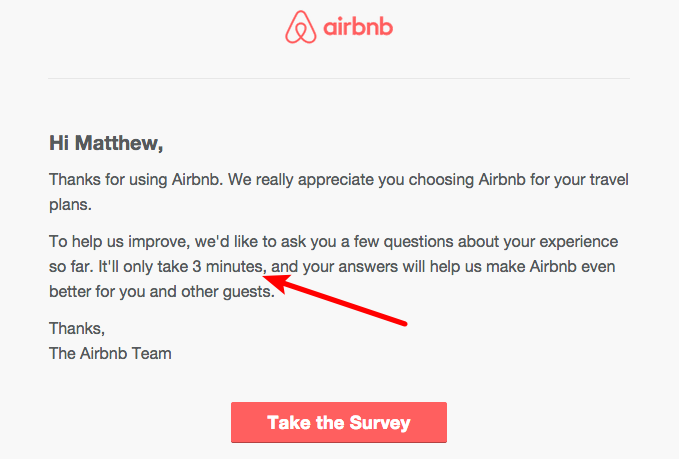
Set expectations
You need a customer feedback strategy for what happens once the feedback starts rolling in to keep everyone on the same page.
Inform your beta users beforehand and set expectations of what you will do with the feedback. Reassure them that their feedback won’t get sucked into a black hole and is being heard and used for product development by sending regular updates. Tell them about your feedback process — how it’s collected, how you deal with it, what is prioritized, and the timeline.
You also need to set expectations internally among team members. Ensure everyone is on track, knows the goals, your budget, and timeline for beta testing, and understands the feedback management process. Set up systems and strategies to help ease feedback management.
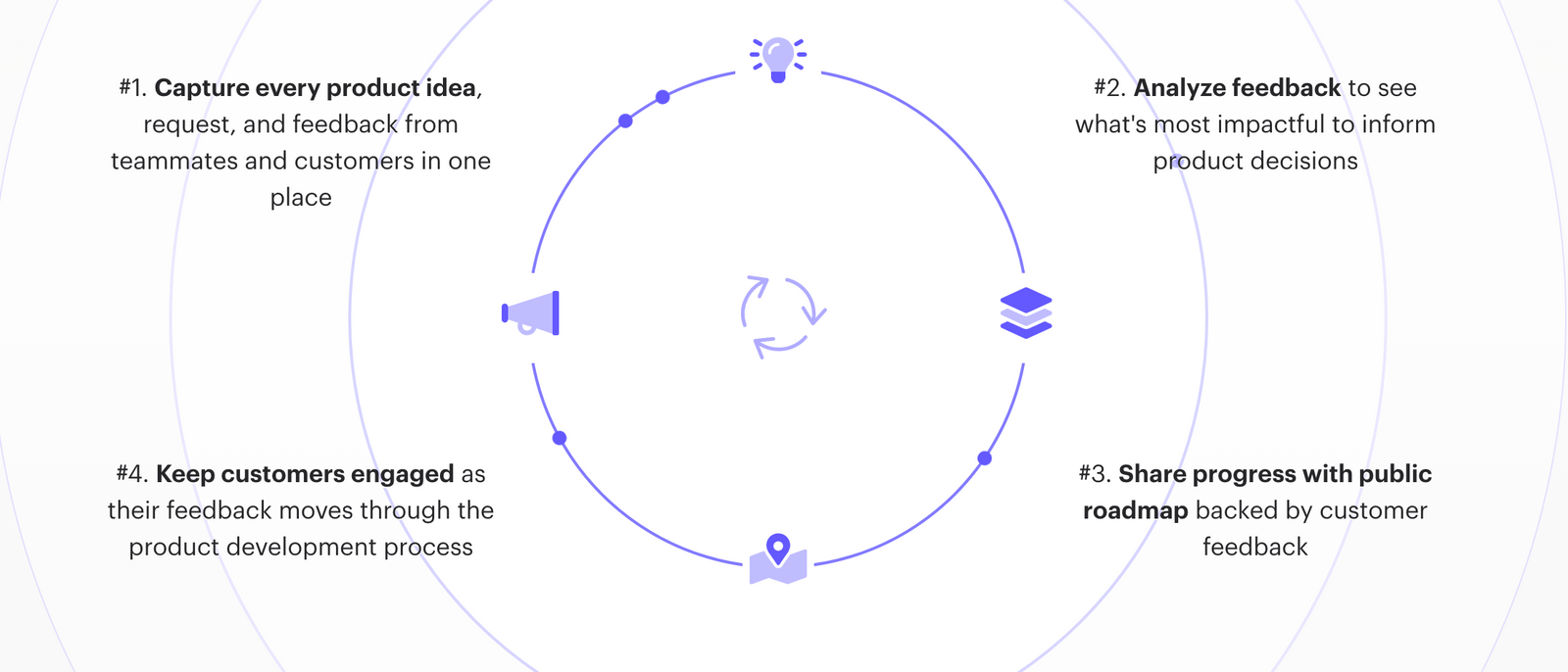
Set up a feedback process
Many companies falsely believe that feedback collection is a one-step process. The truth is, it’s a continuous cycle that will be a core part of building your product.
Set up a system and make it easy for beta testers to provide and for your team to monitor real-time feedback through a survey, a feedback forum, direct communication with the development team, or a feedback management tool.
There are various ways to collect beta user feedback:-
- Customer interviews and social media
- Feedback surveys (like NPS and CES)
- Feedback forms(like Typeform) and in-app feedback,
- Feature request and feedback management tools(tools like Rapidr)
- Digital experience analytics (with tools like Hotjar and Fullstory)
- Product usage metrics (with tools like Amplitude),
The next aspect of your feedback system is prioritizing feedback and deciding how to analyze it to make the best of it.
Receiving feedback from various sources, use a basic spreadsheet or feedback portals. This allows you to consolidate all your feedback in one place and easily prioritize, analyze, and engage with your beta users.
And finally, don’t forget to close the feedback loop. In your beta testing stage, not closing the loop can hinder all the success you’ve worked so hard for up to that point. Your beta testers would want to feel heard.
Analyze and keep track of feedback in real-time
If you’re gathering feedback from different sources, you need to centralize it to keep track of them effectively. You can do this with the help of dedicated feedback tools.
Once you have all the feedback in one place, analyze the feedback you received and try to identify top ideas and highly requested features. Prioritize them based on your product vision, no of votes received, user segments based on revenue, and the importance of the customers who provided the feedback.
Incorporate customer suggestions and ideas into the product to make it more user-friendly, meet customer needs, measure product-market fit, and modify your overall product strategy.
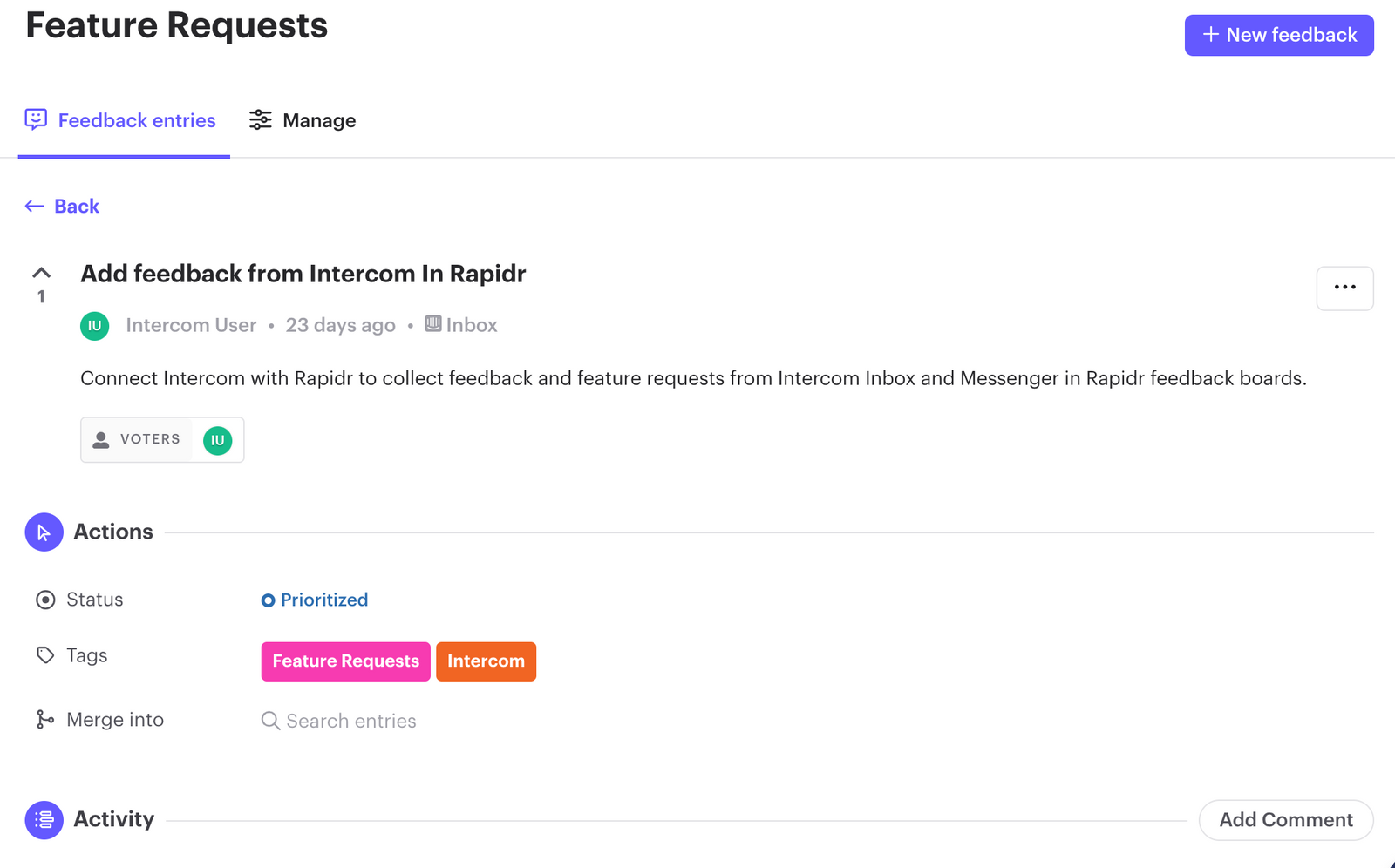
Share beta feedback with the whole team
Break down silos. Let marketing, sales, and engineering teams get involved in customer feedback. Increasing transparency across the company can be a challenge.
Sharing beta feedback with the whole team allows everyone to understand better what users think and feel about the product and make improvements before launching it. You can also connect development teams with customer-facing teams using integrations like Jira with Rapidr to maintain transparency with the whole, not just product teams.
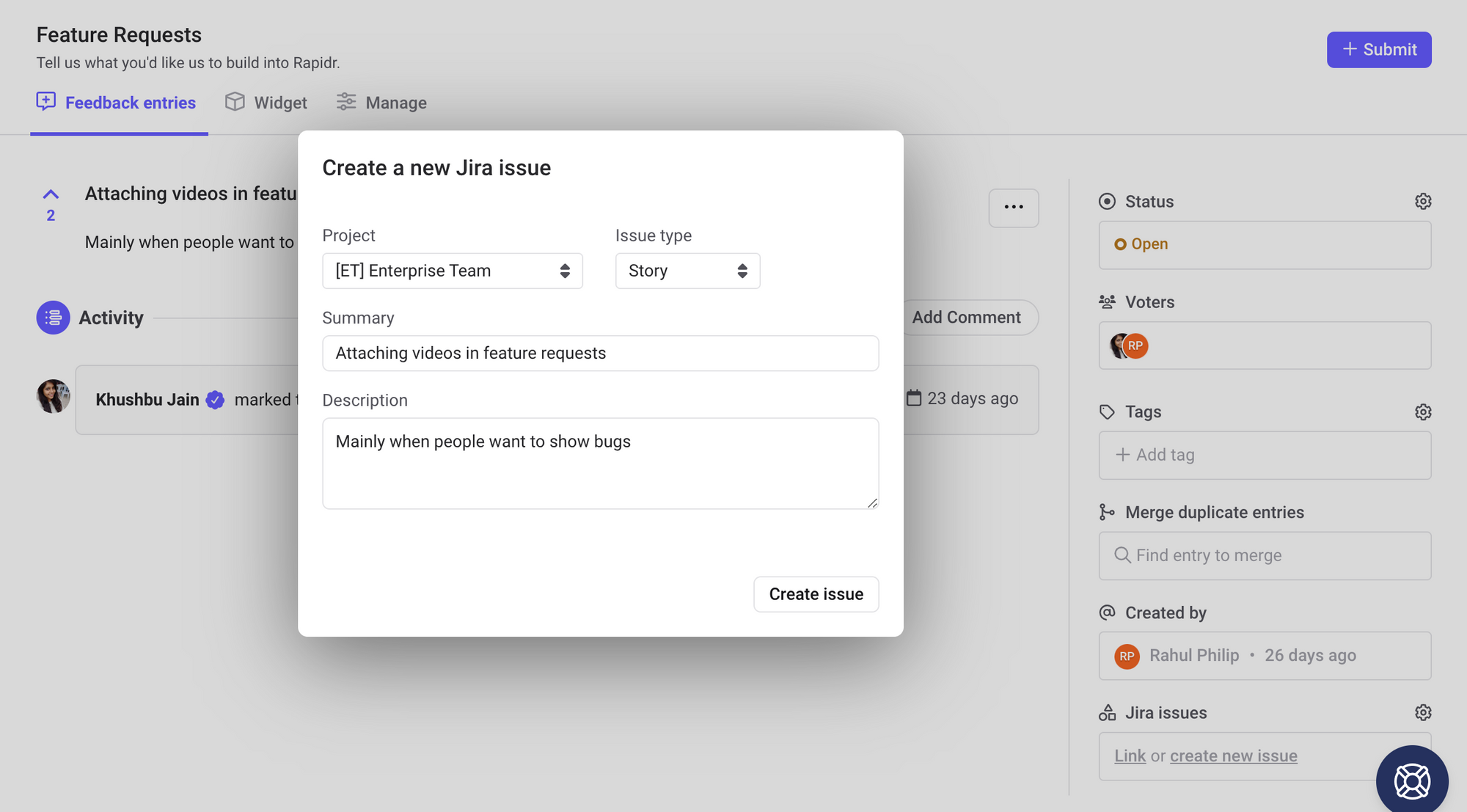
Companies can gain valuable insights into their product's performance and make necessary changes to meet user expectations. Additionally, it helps teams identify potential issues early on, allowing them to take corrective actions before launch.
For example, if you receive positive feedback on a certain feature, relay that information to the marketing team so that they can use it to position the product better.
With public feedback boards provided by Rapidr, multiple stakeholders can have visibility over the feedback process along with other beta testers and future customers. You can invite and collaborate with team members throughout the feedback cycle without an extra dime.
Communicate and follow up with beta testers
Beta users spend their valuable time providing feedback on your product or feature. So, make sure they feel heard and acknowledged.
Thank them and show that you’re listening, whether you plan on implementing their feedback or not. You can also use feedback statuses and reply in comments to communicate the progress on a particular feedback while the product is in development.
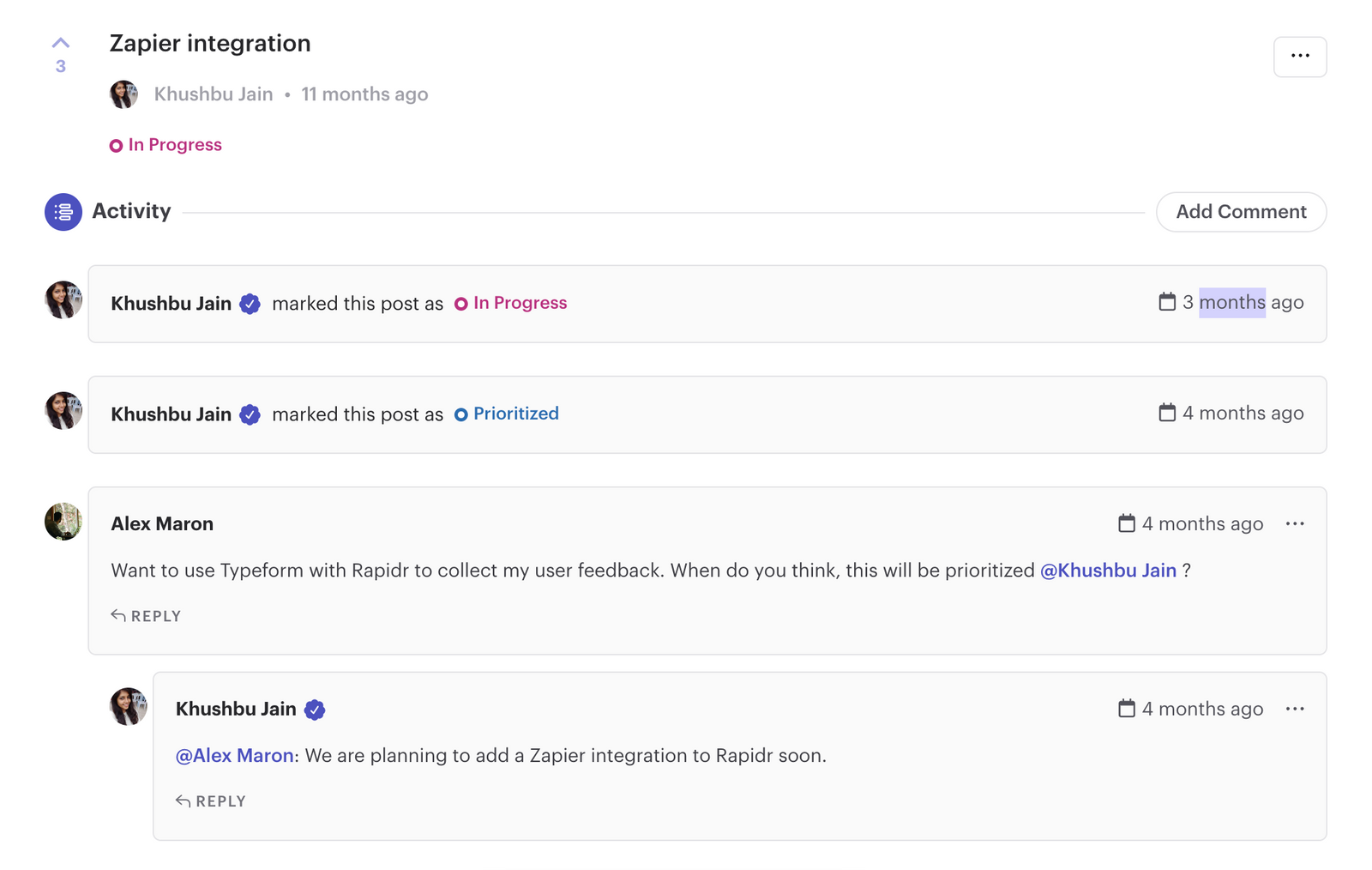
Some companies use an incentive, like gift cards or discounts, to thank their efforts or give a shoutout to a few beta testers who gave the most high-quality reviews. It doesn’t have to be grand — a simple thank you acknowledging their feedback will do.
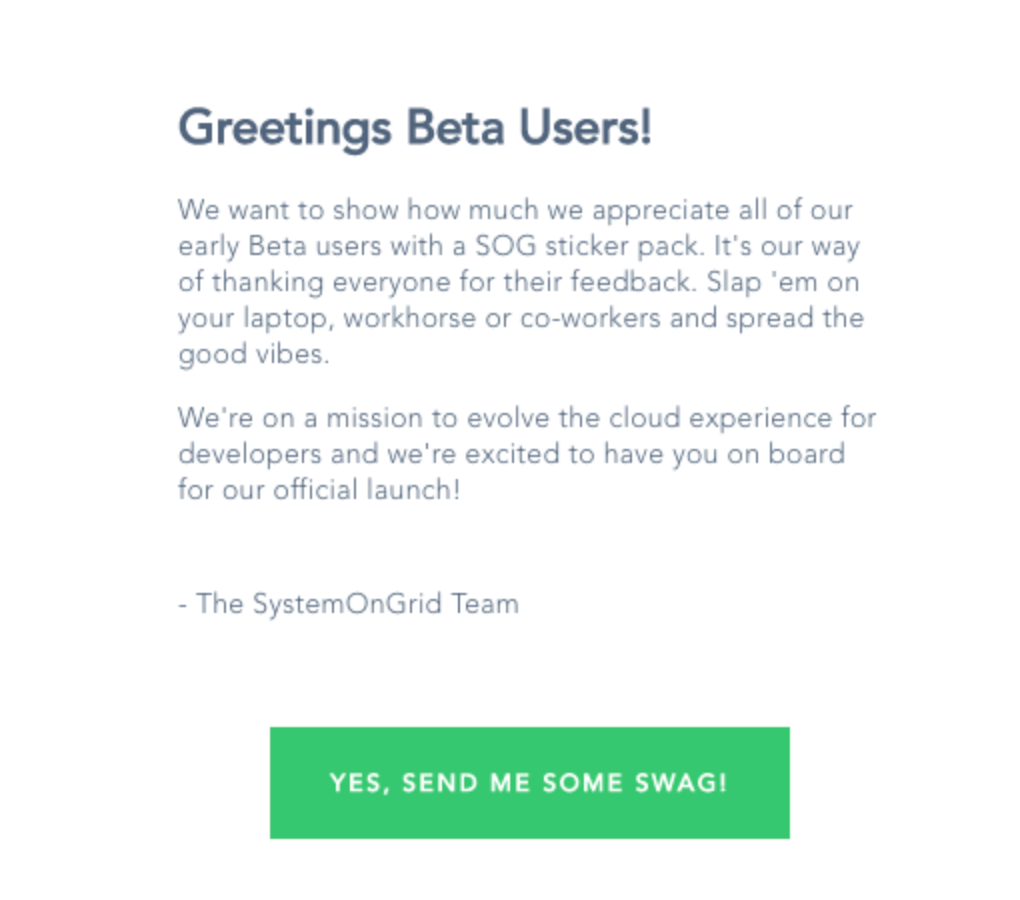
Once your beta testing ends, circle back to the beta users about progress. When you publicly launch, don’t forget to send a special email to them and mention features you added based on their input.
An effective approach to communicate updates is to utilize a product changelog to inform users about releases and new features. Rapidr, for instance, offers a product changelog to communicate, enabling real-time engagement with beta testers by promptly responding to their comments.
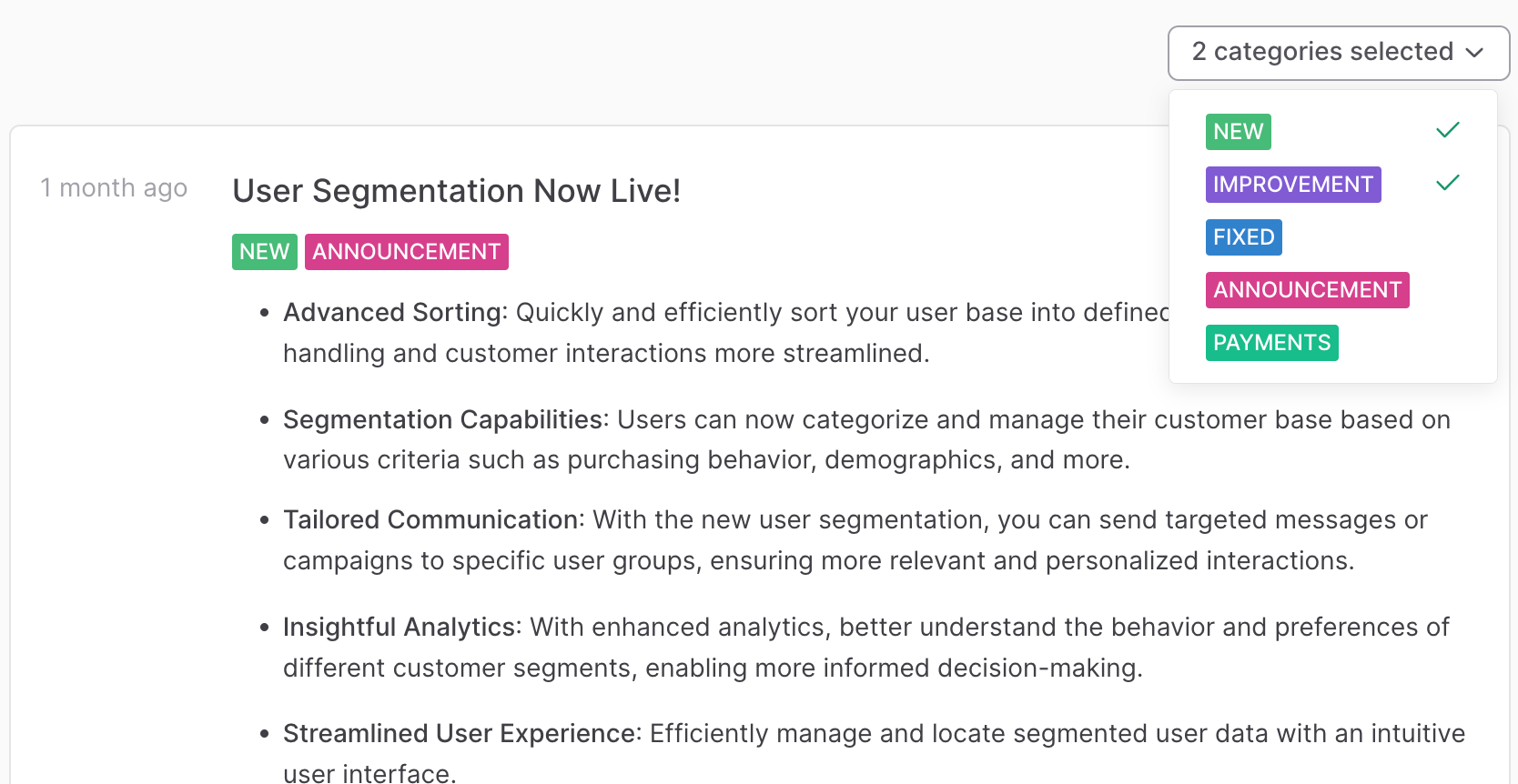
Continuously gather feedback
Feedback collection is a cyclic process. It’s good to have different sets of beta testers for different stages of product development if you’re developing a new product.
The prototyping stage involves testing different designs, features, and product versions to create your minimum viable product. For this, you can collect feedback from a limited group of beta users with private feedback boards and access controls offered by Rapidr.
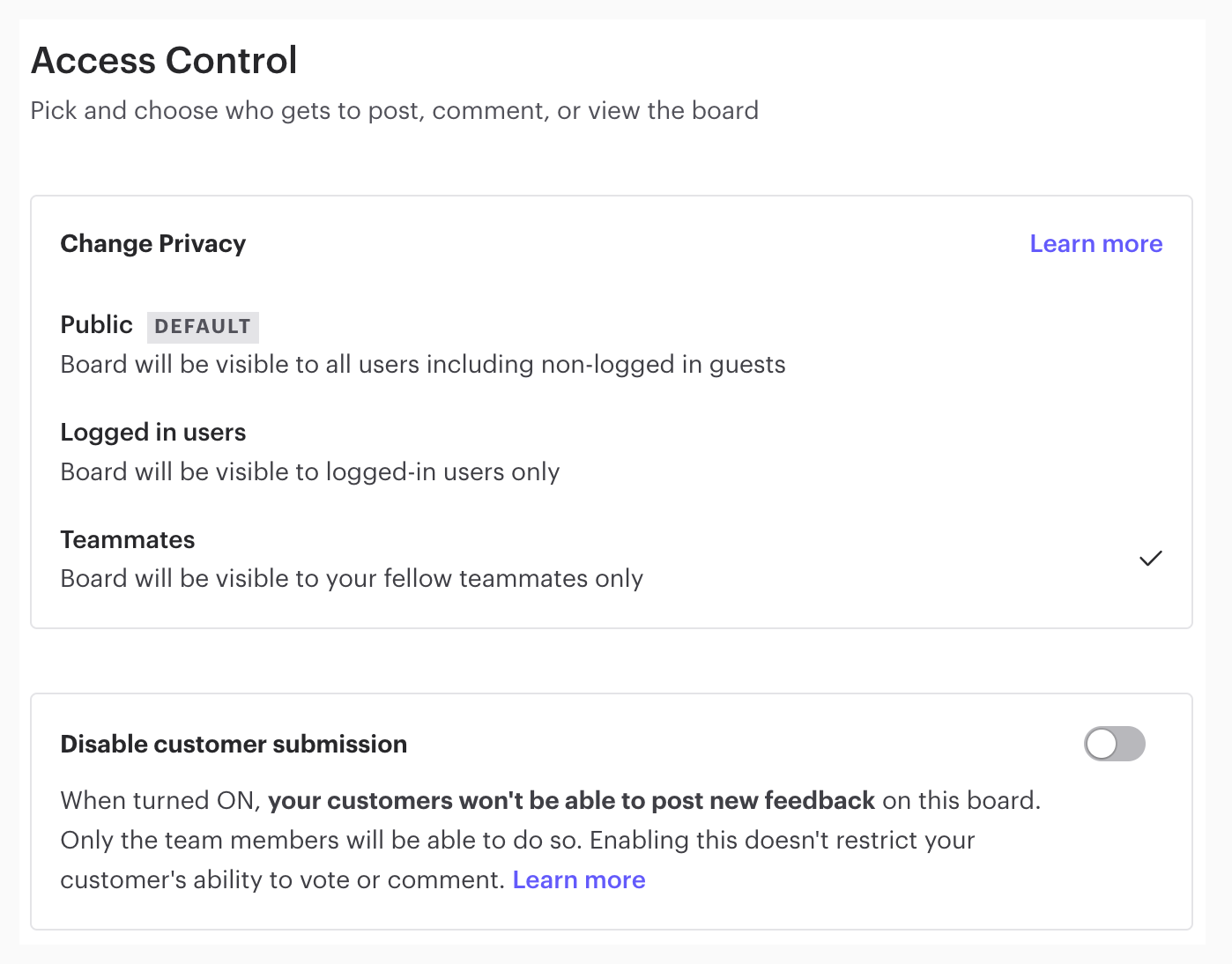
For an existing product, continuously validate feature concepts you’re working on to increase product adoption when launched. Companies can also keep track of all feedback received during beta testing, which can't be incorporated now into the feedback boards. It will also help gather feedback once the product is out of beta to improve it continuously.
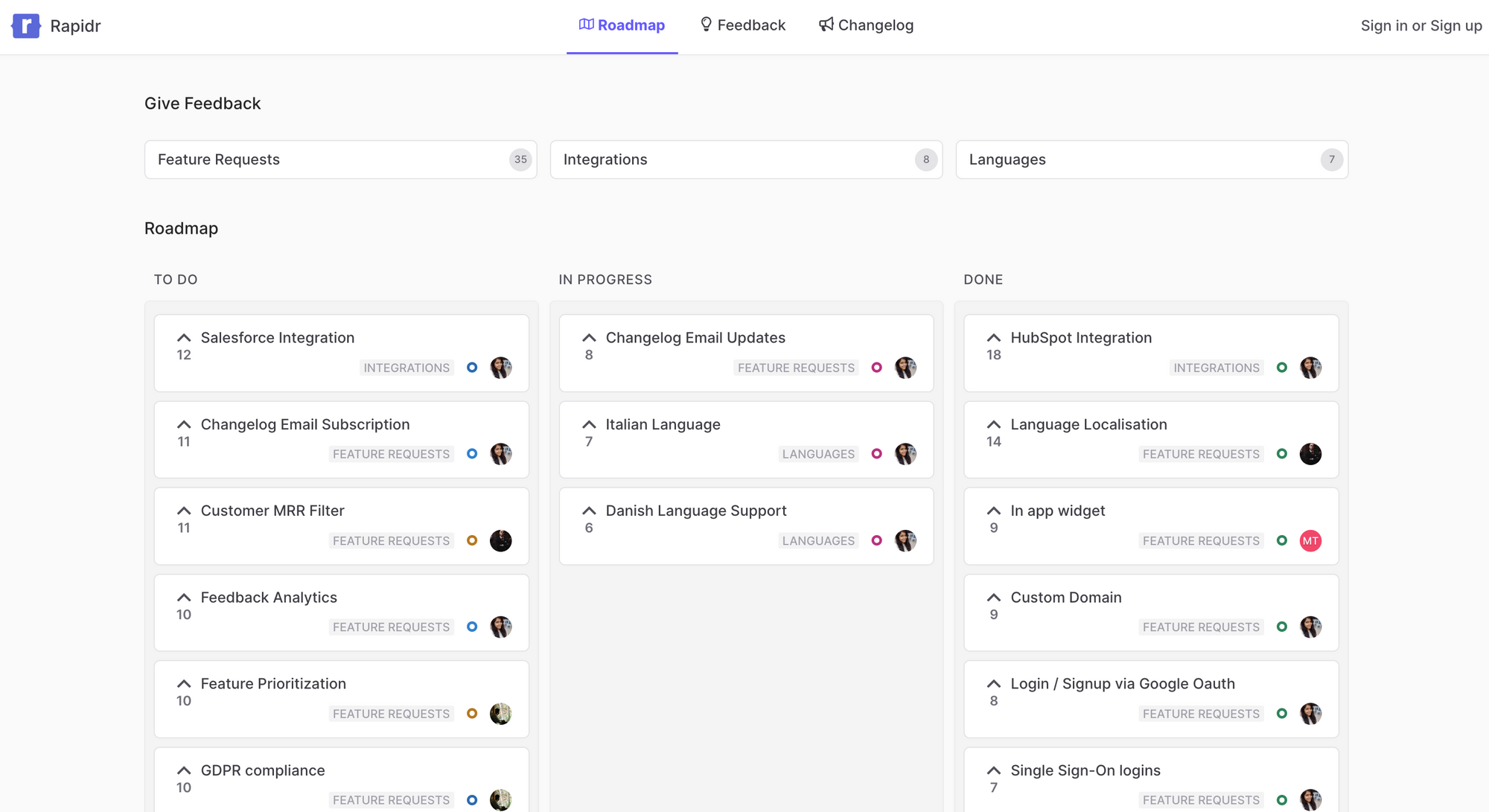
Use feedback to create a product roadmap
Using feedback to create a product roadmap to meet customer expectations, reduce costs, and increase sales when launched. Let’s look at how you can implement feedback from beta users into your product roadmap.
- Prioritize highly-demanded features: Consider your time and budget to important from the urgent. This will ultimately prevent delays and a poorly executed product.
- Evaluate your product strategy based on feedback received and make tweaks where necessary.
- Develop a product roadmap that includes both the feedback from beta users and product/company goals.
Rapidr supports public product roadmaps where you can showcase ideas, features, feedback received, and progress. See how Lasso, one of our customers, keeps all the stakeholders in the loop without multiple back-and-forth communication with a public roadmap.
Collect and manage beta testing feedback efficiently with Rapidr
Beta testing is an essential step in the development process of any product. It allows companies to collect different types of feedback from real users and use it to improve their products. However, collecting and managing beta tester feedback can be a time-consuming task.
Fortunately, the customer feedback management system Rapidr can help streamline the process, collect feedback from beta testers quickly and easily, manage the feedback organizationally, send updates to testers regularly and communicate how their input is helping improve your product.
With Rapidr, companies can ensure they get the most out of their beta testing efforts and make improvements based on valuable user feedback. Sign up now to build better products with beta feedback.

